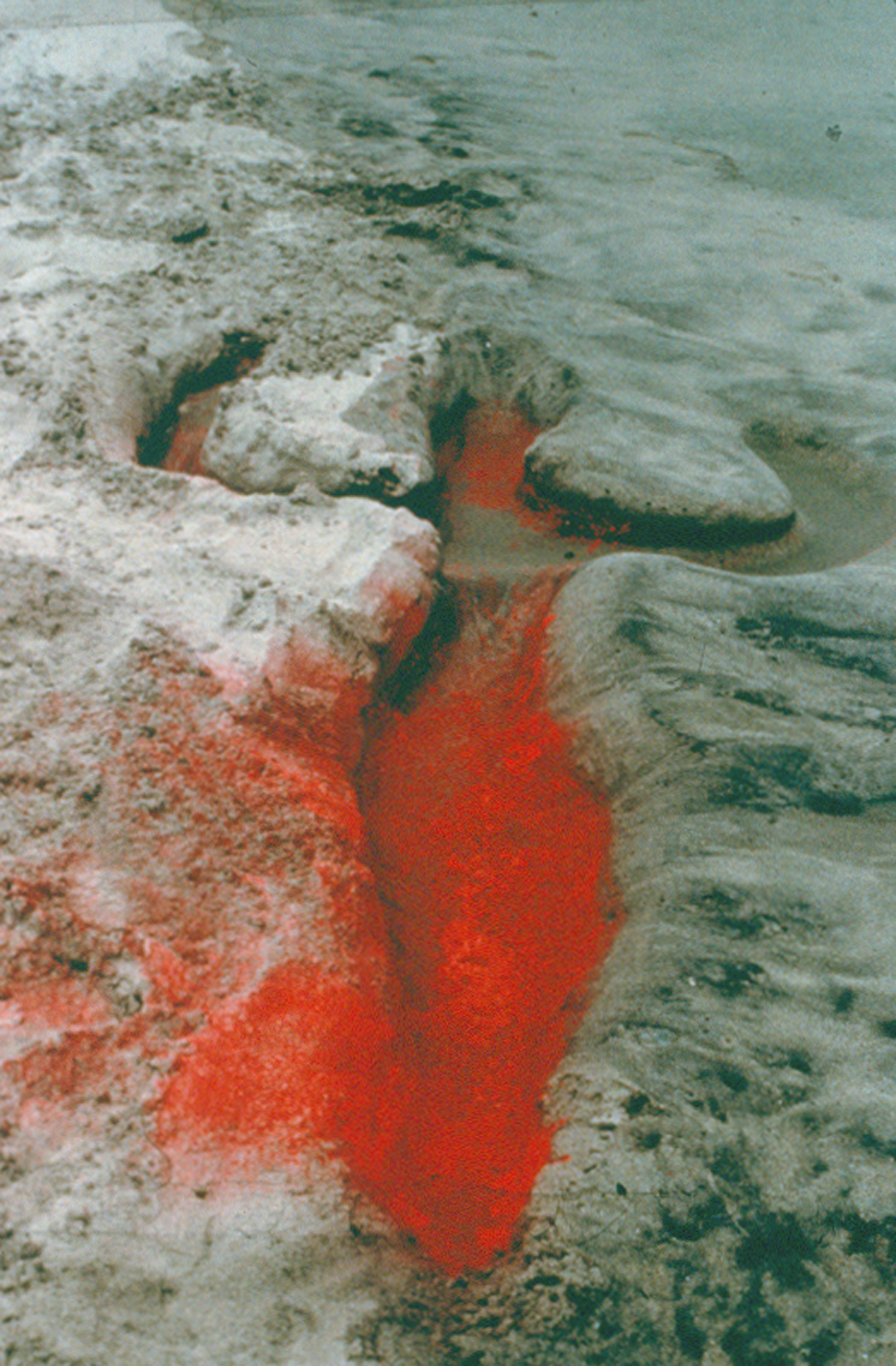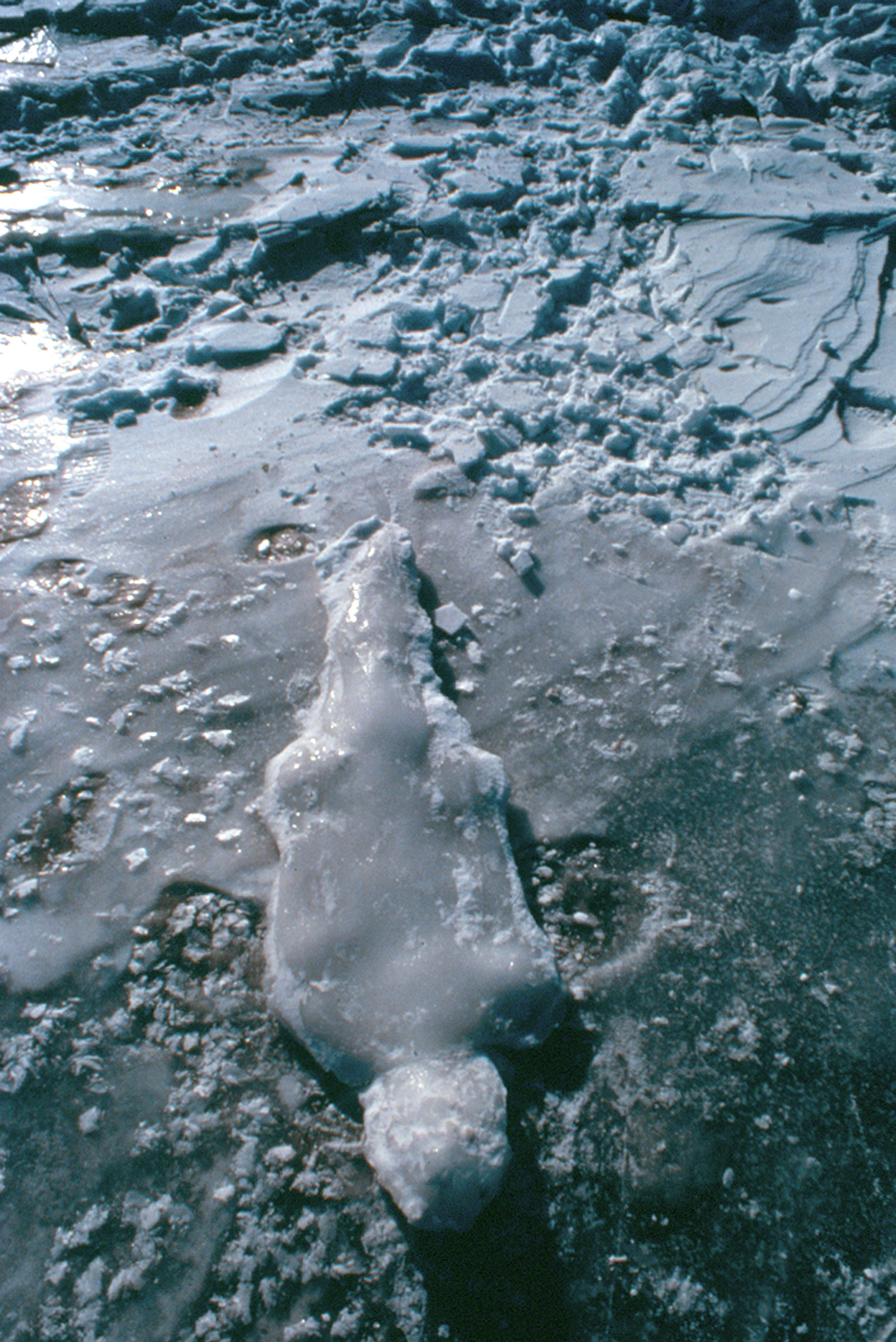Current Feature: Ana Mendieta
Untitled: Silueta Series, Mexico, 1976 Photograph © The Estate of Ana Mendieta Collection, LLC,Courtesy Galerie Lelong, New York
This is one lesson I learn from Mendieta’s work in the museum space: the loss of vision of the whole appears to bring us into more detailed contact with its parts. The vertiginous movement of perspective does more than teach the viewer the presence of absence. It communicates the feeling of instructive and interpretive vertigo. When viewing what I think is the complete figure of a body beside water, I appreciate conversely the materiality of its form through a memory of its parts.
Alma, Silueta en Fuego, 1975 Photograph © The Estate of Ana Mendieta Collection, LLC,Courtesy Galerie Lelong, New York
Equally important to me are the lessons her works suggest when juxtaposed beside other artists’ creations. Movement, in most pieces I observe in the Centre Pompidou, is central to communicating the devastation and chaos that the natural threatens in our carved-out, mechanical lives. Much has been written about Mendieta’s relationship with the earth, but not a great deal has focused on this sense of global catastrophe, the overwhelmingly real or feared natural events that might make our moving bodies disappear. To be sure, the artist’s Silueta Series photographs, also on display in Metz, help us to think about the history of Mendieta’s marked absence, the notion of the trace of an end or an incomplete whole in her presentation of earth/body symbiosis. I have consequently opened with the moving image because I believe that the recent resuscitation of the entirety of Mendieta’s filmic works, led by her niece Raquel Cecilia Mendieta, will further revolutionize the way we understand Mendieta’s life’s production. I also believe that the manner in which we view her old and revived work—in conjunction with moving image theory—needs to be addressed in relationship to the museum’s unique cinematic architecture and its moving patrons.
Untitled: Silueta Series, Iowa, 1977 Photograph © The Estate of Ana Mendieta Collection, LLC,Courtesy Galerie Lelong, New York
To be sure, the artist’s Silueta Series photographs, also on display in Metz, help us to think about the history of Mendieta’s marked absence, the notion of the trace of an end or an incomplete whole in her presentation of earth/body symbiosis. I have consequently opened with the moving image because I believe that the recent resuscitation of the entirety of Mendieta’s filmic works, led by her niece Raquel Cecilia Mendieta, will further revolutionize the way we understand Mendieta’s life’s production. I also believe that the manner in which we view her old and revived work—in conjunction with moving image theory—needs to be addressed in relationship to the museum’s unique cinematic architecture and its moving patrons.
Tree of Life, 1976 Photograph © The Estate of Ana Mendieta Collection, LLC,Courtesy Galerie Lelong, New York
Ana Mendieta, Untitled: Silueta Series, Mexico, 1973 Photograph © The Estate of Ana Mendieta Collection, LLC,Courtesy Galerie Lelong, New York
Captured in film, Mendieta’s revived works are now also digital, and might have been witnessed most recently in Galerie Lelong’s Ana Mendieta: Experimental and Interactive Films. The resuscitation of Mendieta’s filmic work and her continued exhibition within the archive of the museum appear to be ordered, the result of systematic focused labor, a far cry from the “chaos” that marks this edition.
On Giving Life, 1975 Photograph © The Estate of Ana Mendieta Collection, LLC,Courtesy Galerie Lelong, New York
Yet, within the museum, the artist’s pieces are luminous of how the lived space of multiple viewers can present new readings of the elements Mendieta inhabited, shaped, and documented. “Chaos” comes etymologically from “the abyss”—the Greek khaos, denotes this void. And the empty space between Mendieta’s moving and still images in the museum allows for “chaos” to be aligned with the perspectives of new viewerships.
To read the full article from our Issue Chaos, visit here













